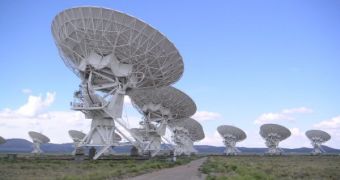St Jacob, Illinois-based astronomer Gary Kronk announced that, sometime at the end of next month, most likely around the 24th of February, a new comet, Luluin, will visit our solar system. This may very well be the first time it reaches us, experts say, and it will pass fairly close to our planet, at a distance of about 38 million miles, which is roughly the same length Mars gets closest to us. According to estimates, the comet's trail will be approximately 8 times as long as the diameter of a full Moon, which should make it visible from virtually anywhere in the world. The show promises to be grand.
Comets are chunks of rocks and ice that didn't integrate in larger celestial bodies when the solar system was first formed. Therefore, they wander around in between planets, and, when they come close to the Sun, their surface starts to melt, releasing gases and small rocky fragments, which give them their characteristic look. Always, the tail of the comet points directly away from the Sun, which is why it will appear to be so long from Earth observatories.
After 2007, when Luluin was first discovered, astronomers calculated that the celestial body has been on the move for at least 10 million years, which can only mean two things – either it has been here before, all those years ago, or it was thrown out of the Oort cloud, a giant comet belt around our solar system, where billions of such bodies exist. If the second theory is true, then this is the first time the comet will pass this close to the Sun.
"If this is its first approach towards the Sun, we don't know how it will respond. Some comets become brighter than expected and some don't," says Kronk. The brightness a comet displays is directly linked to the amount of ice it has on its surface. If it's made almost entirely from frozen water, then it could release an even larger trail the closer it gets to the star at the center of the Universe.
"This is what makes comets so amazing. Every comet has its own personality. No-one knows exactly what the comet is going to do," the astronomer told New Scientist.

 14 DAY TRIAL //
14 DAY TRIAL //